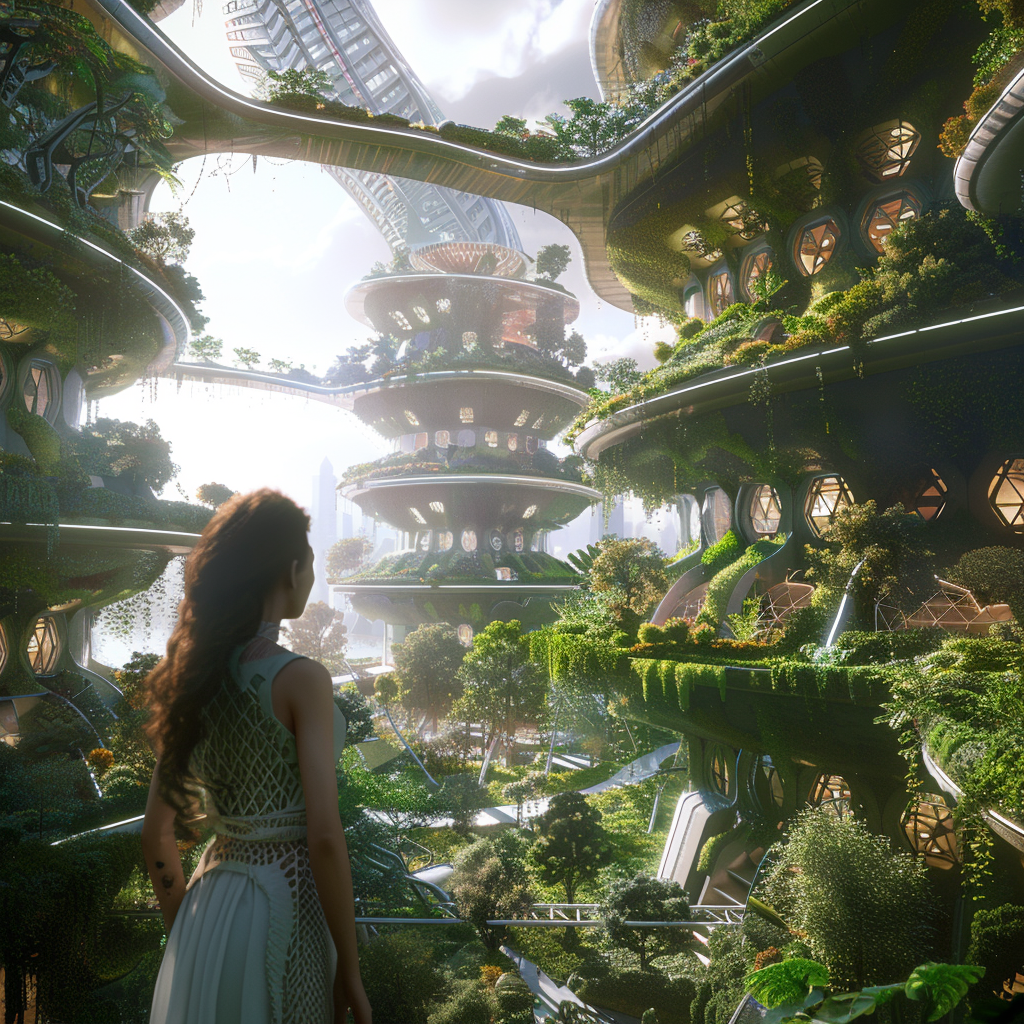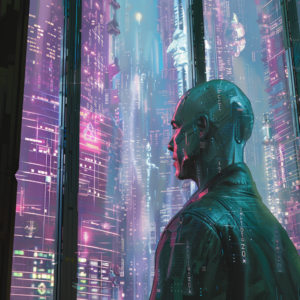
In the city of Nova Luz, where human potential met nature’s versatility, Lumina pulsed with life. Lumina, a marvel of bio-architecture composed of biometal and organic matter, resonated with a life of its own. Its inhabitants are people like you and me, but they have an affinity for the city’s rhythm, the pulsating life force. Lumina, with its radiant buildings and vibrant green spaces, was a sight to behold, a testament to the beauty of coexistence between nature and technology.
Sylph, a woman with a strange name and an even stranger profession, was one such resident. A techno-botanist, she was attuned to Lumina’s life force, understanding the subtle changes in the city’s heartbeat. Lumina’s buildings, streets, and parks responded to her touch like a pet would respond to its caretaker. Her heart, too, resonated with Lumina’s rhythm, her emotions mirroring the city’s pulse.
Yet, as if awakened from a peaceful slumber, Lumina began to change. Once radiant buildings were decaying overnight, green spaces, usually vibrant, lost their colors. Sylph was just as surprised as everyone else, but her surprise quickly turned into a burning desire to decipher the cause of Lumina’s sickness. Her curiosity transformed into a fierce determination to save her city.
She was not just a passive observer anymore but an active participant in Lumina’s fight for survival.
Her journey took her through the city’s veins, where she grappled with the complex symbiosis between Lumina and its inhabitants. As she unraveled the mystery, Sylph was confronted with her dual identity – being part of Lumina and being the key to saving it.
The narrative unfolded from Sylph’s perspective, her thoughts revealing the intricate balance of life within Lumina. It wasn’t just a journey through the city but an exploration of her understanding and role within this living entity.
Lumina, named after ‘light,’ symbolized the constant dance between light and shadow, growth and decay. The irony was found in Lumina’s self-destruction, a city meant for growth and life that was now crumbling.
Amidst this, Sylph faced internal conflicts, torn between her duty to protect Lumina and her very identity woven into the city’s existence. She questioned her role, her purpose, and her loyalty, adding a layer of complexity to her character and the narrative.
Lumina, too, faced external threats from fearful outsiders who misunderstood the city’s unique life force and unpredictable evolution.
As the climax approached, Lumina’s true nature surfaced. The city wasn’t decaying – it was transforming. The city had a life force, self-regulating and evolving to maintain its delicate symbiotic relationship with its inhabitants. It was a cycle of life, a lesson about the destructive force necessary for rebirth and new beginnings. Lumina’s transformation was not just a change, but a profound shift, a testament to the resilience and adaptability of life.
And so, Sylph’s journey ended, but Lumina’s continued. Constantly changing and always evolving, the living city of Nova Luz stood as a testament to the intricate dance of life and the never-ending process of transformation. It was a living, breathing organism – a city and much more. The city was a symbol of coexistence, a fusion of nature and technology, reminding everyone of our delicate balance with the world we inhabit.
No tags for this post.



